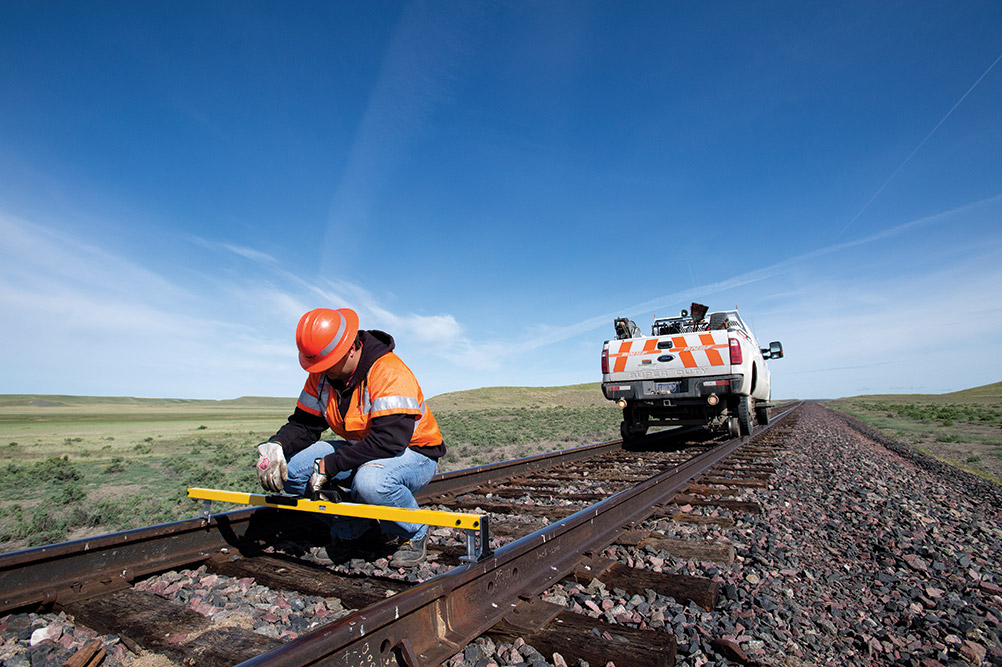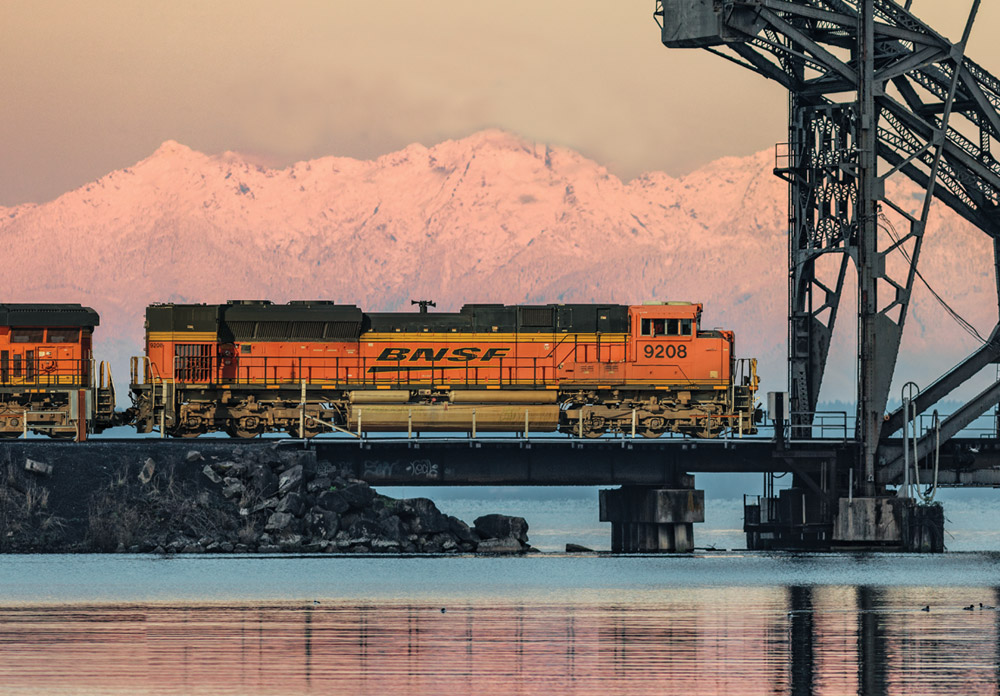Training Our Team
At BNSF, safety is the most important thing we do. So we train our employees on an array of technical rules and safety topics. These include federal regulations, rail industry recommendations and BNSF-specific initiatives. Some of this training happens at the BNSF Technical Training Center (TTC) in Overland Park, Kansas. There, employees take courses and utilize simulation and lab tools that represent equipment, including locomotives, cranes and crossing gates. In 2017, we trained more than 4,500 employees at TTC and close to 20,000 in the field, as well as more than 500 rail industry employees.

BNSF trained more than 20,000 employees in our
Approaching Others About Safety initiative in 2017.
Approaching Others About Safety
Developed five years ago, BNSF's Approaching Others About Safety initiative has helped us make fundamental changes in how we address safety. The initiative is interwoven into the very fabric of our company culture and impacts people's lives in a positive way. It continues to generate thousands of conversations every day among BNSF team members, helping us find ways to minimize risk and eliminate injuries for individuals and work teams and to be confident and effective when speaking to each other about safety. Approaching Others is designed to address the risk associated with the exposures that result in 97 percent of the fatalities and serious injuries in the rail industry. In 2017, more than 20,000 employees received Approaching Others About Safety training.
Preventing Injuries
The U.S. rail industry has made significant gains in safety over the years, and BNSF is a leader in this area. In 2017, our injury-frequency ratio fell short of our goal, but we remain focused on continuing to identify and mitigate exposures in our workplace. We do that by coming to work every day with the expectation and mindset that we will work injury-free and speak up about safety so that every employee is able to return home safely.
2017 Injury Rate Per 200,000 Employee Hours
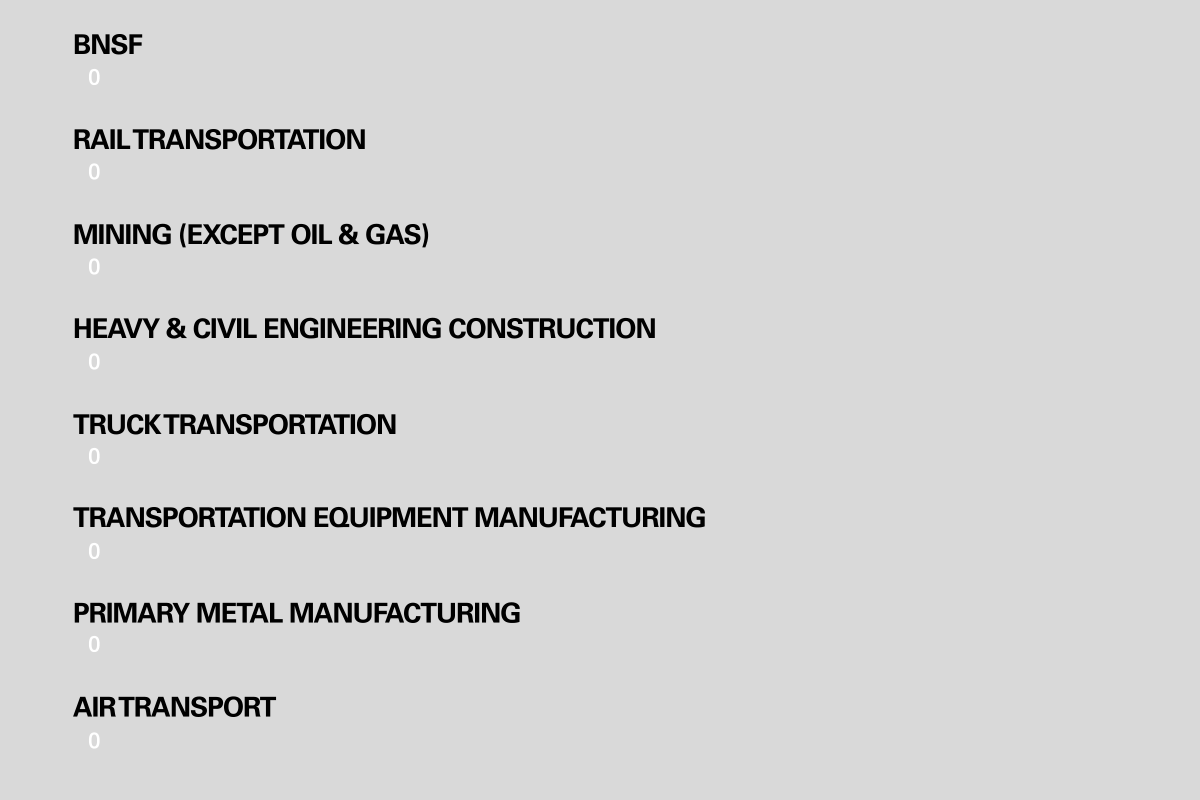
Injury rates for BNSF and the rail industry are quoted based on Federal Railroad Administration 2017 year-end data. All other data is from the year 2016 from the Bureau of Labor Statistics
Preparing First Responders
Trained first responders are essential to take action in the unlikely event of an emergency involving our railroad. BNSF continues to play a major role in training emergency hazmat responders in the communities in which we operate. In 2017, BNSF helped train more than 8,000 first responders. This training is provided by BNSF and railroad industry partners through the Transportation Community Awareness and Emergency Response (TRANSCAER) program. TRANSCAER recognized BNSF with its 2017 National Achievement Award for our outreach efforts to help communities prepare for and respond to possible hazardous material incidents. This is the 18th National Achievement Award BNSF has received from TRANSCAER. BNSF also has an extensive network of emergency responders who are trained to respond to situations from small non-accident releases to major releases. To support their efforts, we have strategically placed emergency response equipment across our network.
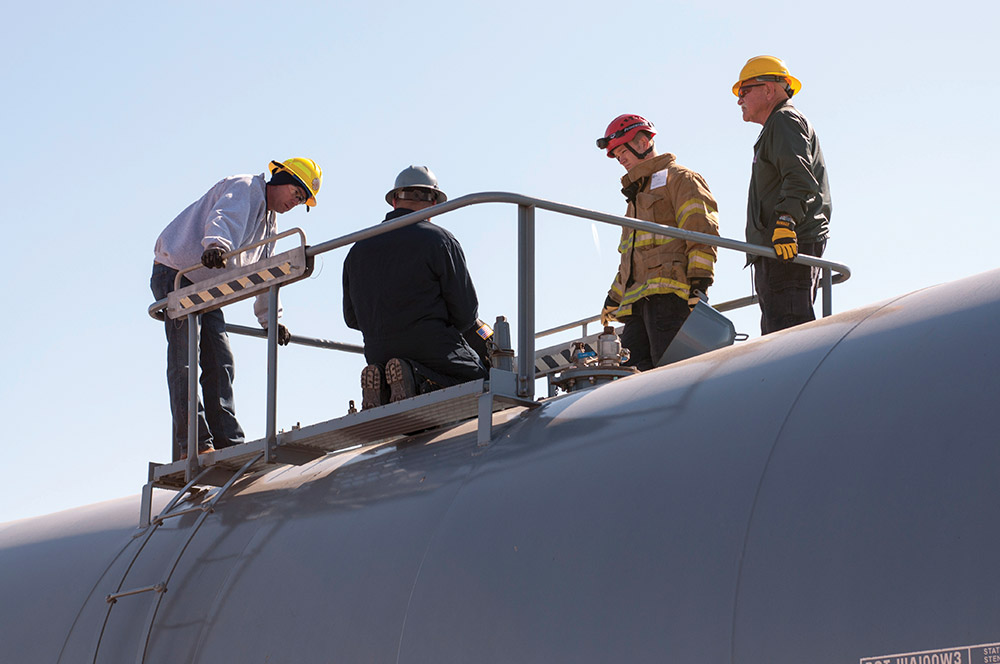
Making Grade Crossings Safer
BNSF has achieved one of the industry's lowest highway-railroad grade-crossing collision rates. One key way to lessen collisions is to reduce the number of crossings; in collaboration with communities and landowners, we have been able to close more than 6,300 grade crossings since 2000. We also regularly participate in programs such as International Grade Crossing Awareness Day in communities across our network. Every year, BNSF invests an average of $120 million on grade-crossing maintenance.
Source: Federal Railroad Administration 2017 year-end data.
Leading the Way in PTC
In 2017, BNSF completed installation of all federally mandated Positive Train Control (PTC) infrastructure on our network. We are currently running hundreds of trains daily with PTC as we test our revenue service operations over our entire mandated territory. As per the federal mandate, BNSF has installed the PTC infrastructure on all 88 required subdivisions, covering more than 11,500 route miles and 80 percent of our freight volume.
What is PTC?
PTC is technology that overlays existing train hardware and software.
As mandated by law, PTC is intended to prevent:
- Train-to-train collisions and derailments caused by excessive speed
- Unauthorized incursions by trains onto sections of track where maintenance activities are taking place
- Movement of a train through a track switch left in the wrong position
PTC Progress
These areas represent some key metrics as of December 31, 2017. They are derived from BNSF's quarterly PTC progress report on our implementation plan filed with the Federal Railroad Administration (FRA).
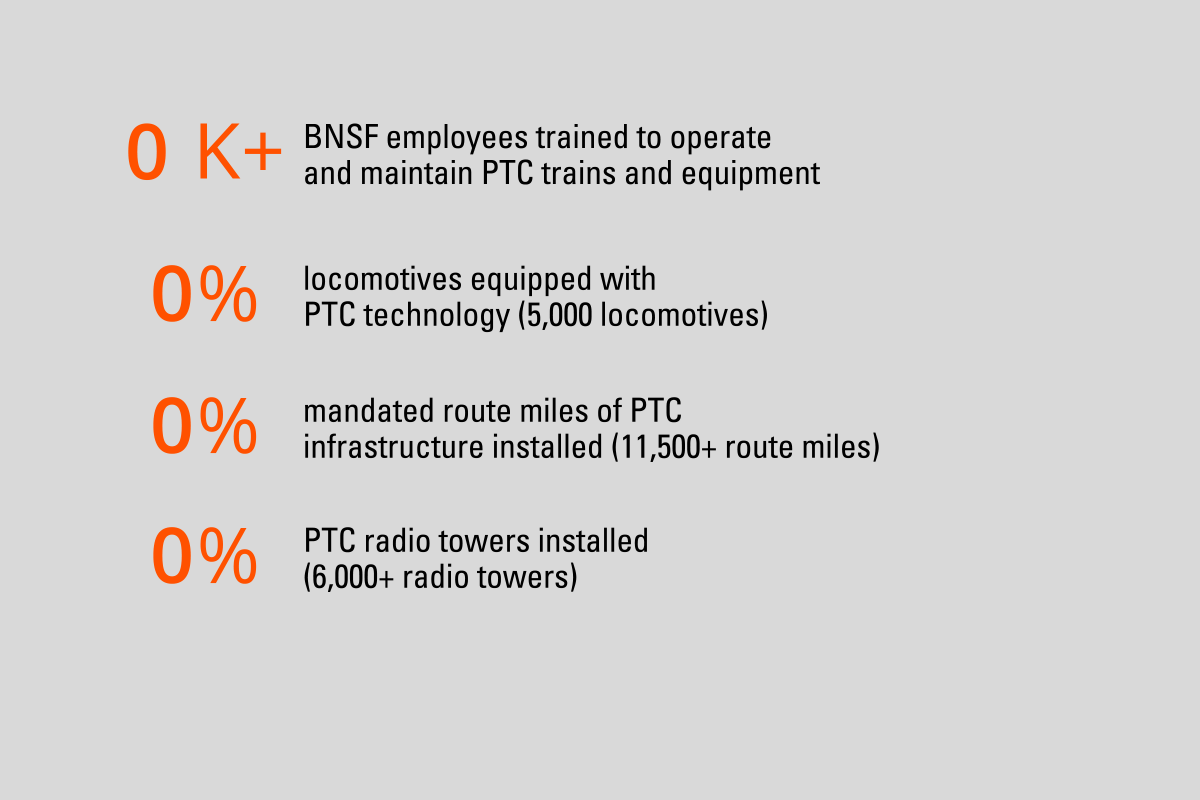
Looking to the Future
Interoperability is a challenge and focus in 2018. This means one railroad’s locomotive can access another railroad’s network and still have PTC protection. Interoperability of PTC systems between Class I, commuter and shortline rail carriers is a vital concern. BNSF looks forward to working with other railroads to expand interoperability and with the FRA to ensure PTC enhances rail safety wherever it operates.
Conducting Extensive Inspections
To continue to run a safe, reliable railroad, BNSF conducts regular and rigorous track, weather event, bridge and rail defect inspections. Our efforts include routine visual inspections by more than 650 trained and experienced track inspectors who patrol miles of track. Unmanned aerial vehicles and special railcars are also used to test track and detect flaws.
Enhancing Safety and Efficiency by Leveraging Technology
Detectors and Data Analytics
BNSF continues to leverage technology to keep the railroad operating as safely and efficiently as possible. Thanks to technology advancements, our maintenance plans become more precise every year. More than 4,000 trackside detectors monitor every locomotive and railcar on our network 24/7, creating a continuous stream of data. Some of these detectors sense heat or feel the force of the equipment on the tracks, while others can hear defects on wheel bearings or cracks in wheels before they are visible. Through cameras and machine learning, certain detectors can see when parts are missing or something isn’t in the right position. With more than 35 million readings every day, BNSF uses this data to determine the urgency of equipment repairs and spot trends that indicate a more planned prescription for maintenance, informing actions such as the scheduled overhaul of locomotives and railcars.
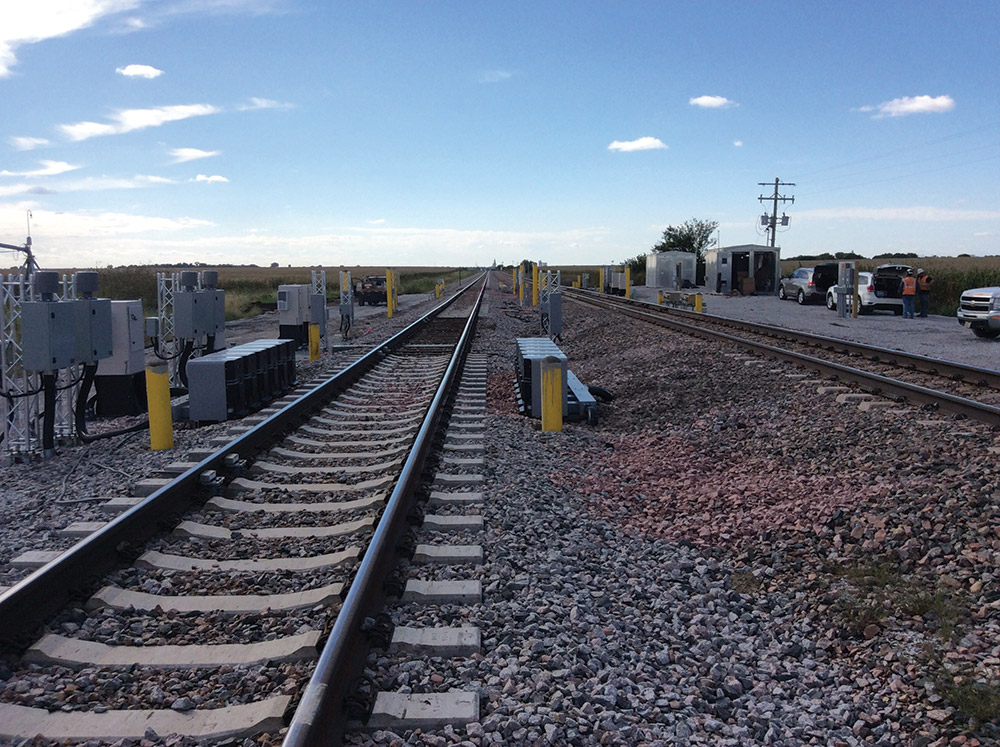
BNSF captures more than 35 million readings per day.
Autonomous Geometry Cars
The condition of our track is monitored utilizing geometry cars that travel all parts of the BNSF network. The geometry cars can simulate the force and weight of railcars moving over the tracks and use laser inertia systems and optical technology to measure the track while under load and moving at high speeds. In 2017, BNSF added two autonomous geometry cars to the fleet to perform track tests. The unmanned geometry cars have more than tripled the amount of track we test every year to approximately 300,000 miles. These autonomous geometry cars are capable of conducting geometry tests on the condition of track 24/7, dramatically increasing the miles of track tested. Data from the tests is processed and analyzed to develop a real-time track-surfacing plan, improving the reliability of our infrastructure.
Unmanned Aerial Vehicles
BNSF continues to break ground in the use of unmanned aerial vehicles (UAVs) – or drones – in the rail industry. We are becoming more involved in edge machine processing through which algorithms process data collected via drones in the field and then transfer it back to headquarters. In addition, camera systems installed on UAVs are helping to assess the condition of various assets such as our concrete ties, rail and right-of-way. UAVs also help BNSF prepare for and respond to adverse weather events. During Hurricane Harvey, for instance, UAVs were able to provide critical information on network conditions in places that would have been unreachable or unsafe to send out BNSF crews.
Tablets in the Field
In 2017, BNSF began deployment of mobile tablets to employees in the field to help speed up tasks, enhance information accuracy and improve safety. The tablets allow train crew team members to complete key tasks and provide more convenient access to the applications and information they need. Track inspectors are also using tablets to obtain exact maps of assets and to perform scheduled inspections. BNSF issued nearly 3,000 tablets in 2017, and plans to continue distributing them to thousands of field employees going forward.
UP NEXT:
Service
